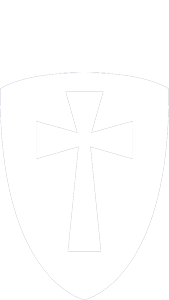General Overview
The STEM Program and STEM Diploma offerings at CCS were developed to provide the CCS student interested in pursuing STEM at the college or career level with a high quality, rigorous, and academically challenging learning environment. Depending on the student’s subject interest and candidacy, there are several STEM pathways the student may follow: Sciences, Technology, Engineering, Architectural, and Industrial. Each of these main areas of study provide the student with rich, project-based and hands-on course content that serves to realize the student’s potential as a technology leader, innovator, collaborator, and real-life problem solver.
What is the difference between a STEM Program and STEM Diploma?
The STEM Program at CCS is a curriculum that offers STEM classes as an option for ALL students, including those not seeking a STEM diploma, but still interested in taking specific classes in the field of science, technology, engineering or mathematics.
The STEM Diploma is a specific curriculum designed for those students who qualify and have shown interest in pursuing a STEM major at the college level.
How does a CCS STEM Diploma prepare your student for success as a STEM major in college?
According to the President’s Council of Advisors, “fewer than 40 percent of students who enter college intending to major in a STEM field actually complete a STEM degree.” STEM majors have a reputation for being challenging. Often, they are requiring students to spend hours in the classroom studying and completing coursework. It can be especially tough for some high school students to reach a level of college readiness in STEM if their high schools lack adequate STEM courses (1).
The CCS STEM Diploma prepares our students by offering an in depth, hands-on curriculum designed specifically for those pursuing a STEM major. With heavy emphasis on math, science, engineering and Engaged Learning techniques, your student will be better prepared for the rigors of a STEM course load in college.
Sample Curriculum
- Mechatronics
- Space Engineering and Technology
- Computer Aided Design and Process Engineering (CADE / CAPE)
- Civil Engineering and Architecture
- Electrical Engineering and Electronics
- Digital Design
- Biological / Biomedical
- Process Engineering and Automation
- Systems Troubleshooting
Sample Course Description
Space Engineering and Technology Course Description. Space Engineering and Technology is a course designed for the high school student who may be interested in pursuing a career in Aeronautical, Astronautical, or related engineering discipline. Aerospace Engineers are called to solve problems in the design, construction, operation, and maintenance of aircraft or spacecraft that meet an ever-increasing demand for improved performance at lower cost. In this semester-long course, the student will be introduced to aerospace engineering and technology while learning about the roles and functions of the aerospace engineer.
Understanding that we cannot know where we are going until we know where we have been, the student will learn about the history of flight, the fundamentals of aerodynamics in relation to flight as well as aircraft performance and propulsion systems. Students will learn and apply the basic mathematical principles employed in aircraft design by direct application or simulation.
As the focus shifts towards space, satellite and basic orbital mechanics are covered with introduction to space mathematics and the significant relevance mathematics plays in all aspects of space engineering and technology. Lastly, topics in human exploration are covered, including an overview of previous space missions and a close look at how we learn some very important engineering lessons from studying failure.
Coming Soon!
Our website will include a STEM application, full curriculum, pathways, and FAQ. Look for this in the spring of 2018.
- //www.collegeconfidential.com/3-ways-incoming-stem-majors-prepare-college/






